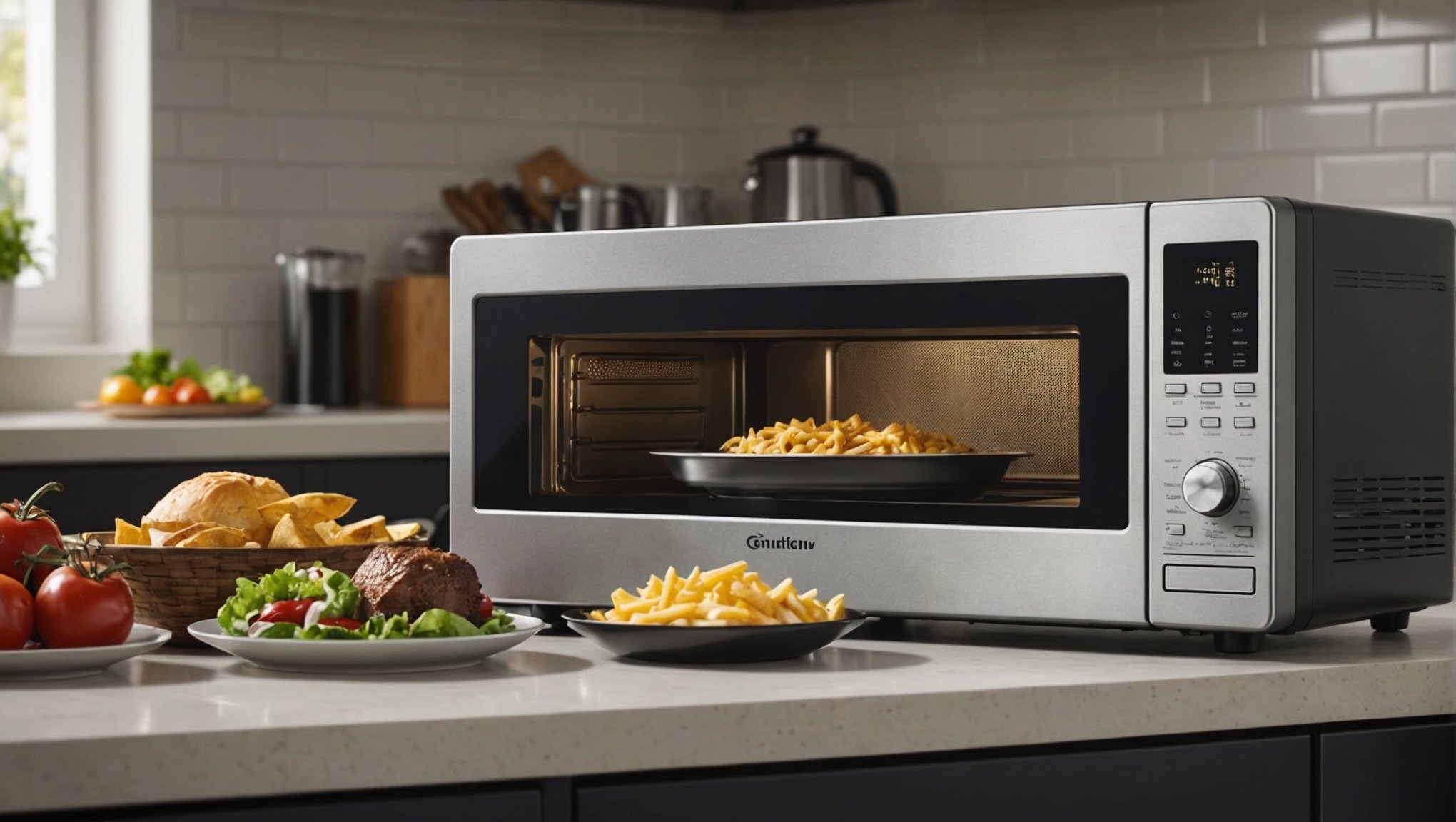Microwave oven technology has experienced remarkable advancements, transforming how we cook and heat food. From smart features that enhance convenience to energy-saving designs, these innovations cater to modern lifestyles. Whether you’re a busy professional or a culinary enthusiast, understanding these breakthroughs can elevate your kitchen experience. Explore the latest developments that redefine efficiency, safety, and user-friendliness, ensuring you get the most out of your microwave. Prepare to be amazed by what today’s microwave ovens can do!
Recent Advancements in Microwave Oven Technology
In recent years, microwave oven advancements have revolutionised the way we cook and reheat food. The latest microwave technology offers features that were once unimaginable. For instance, smart sensors now automatically adjust cooking time and power levels, ensuring perfectly cooked meals every time. This innovation caters to busy lifestyles, providing convenience and precision.
Also to discover : Selecting the Perfect Potato Masher: Protect Your Non-Stick Cookware from Scratches!
Innovative microwave features such as inverter technology maintain consistent power levels, preventing the common issue of uneven cooking. This is particularly beneficial for delicate dishes that require gentle heating. Additionally, the integration of convection and grill functions allows for versatile cooking, transforming the microwave into a multi-functional kitchen appliance.
Emerging trends indicate that consumers are increasingly favouring models that offer connectivity with smart home systems. Voice control and remote operation via smartphone apps are becoming standard, aligning with the demand for smart kitchen solutions. These features not only enhance user experience but also contribute to energy efficiency by allowing users to monitor and control usage.
Also to see : Selecting the Perfect Potato Masher: Protect Your Non-Stick Cookware from Scratches!
In summary, the ongoing advancements in microwave technology are reshaping consumer expectations. The focus on innovative microwave features and connectivity reflects a shift towards more intelligent and adaptable kitchen appliances. As technology continues to evolve, we can anticipate even more exciting developments in this space.
Energy Efficiency Innovations
As the demand for sustainable cooking technology grows, the focus on creating energy-efficient microwave ovens has intensified. These modern appliances are designed to minimise energy consumption without compromising performance. One of the key innovations in this area is the use of inverter technology, which maintains a consistent power level, reducing unnecessary energy spikes. This feature not only ensures even cooking but also contributes to lower energy usage.
Eco-friendly microwaves are becoming increasingly popular due to their positive impact on both utility bills and the environment. By consuming less electricity, these models help households save on energy costs, offering a practical benefit alongside their environmental advantages. The shift towards energy-efficient models is part of a broader trend towards more sustainable living practices.
When comparing traditional microwaves to their modern counterparts, the difference in energy consumption is significant. Older models often operate at a fixed power level, leading to inefficient energy use. In contrast, newer models are equipped with smart sensors and inverter technology, allowing them to adjust power levels based on the food being cooked. This adaptability not only enhances cooking precision but also optimises energy use, making energy-efficient microwave ovens a wise choice for eco-conscious consumers.
Enhanced Usability Features
Modern smart microwave ovens are redefining how we interact with kitchen appliances. These devices are equipped with connectivity features that allow seamless integration with smart home systems. Imagine adjusting cooking settings from your smartphone or using voice commands to start dinner. This level of control exemplifies the user-friendly microwave design that is becoming increasingly popular.
In terms of usability improvements, manufacturers are focusing on intuitive user interfaces. Touchscreen controls and simplified menus make operating these appliances straightforward, even for those unfamiliar with technology. This focus on simplicity ensures that users can easily navigate various functions without confusion, enhancing overall satisfaction.
Moreover, microwave usability improvements extend to accessibility features. For users with diverse needs, such as the elderly or those with disabilities, these appliances offer solutions like large, easy-to-read displays and tactile buttons. Such thoughtful design elements ensure that everyone can benefit from the latest microwave technology without barriers.
In summary, the advancements in smart microwave ovens emphasize a shift towards more accessible and user-friendly designs. By prioritizing connectivity, intuitive interfaces, and accessibility, these innovations cater to a wide range of users, making cooking more convenient and enjoyable for all.
Performance Breakthroughs
In the realm of microwave cooking performance, recent innovations have significantly enhanced speed and efficiency. High-performance microwaves now incorporate advanced technologies designed to expedite cooking times while ensuring consistent results. One such technology is the incorporation of turbo defrost features, which allow for rapid yet even thawing of frozen foods. This capability not only saves time but also preserves the quality and texture of ingredients, which is crucial for maintaining the intended taste and presentation of dishes.
Another notable advancement is the development of fast cooking technology that utilises dual heat sources. By combining microwave energy with convection heat, these high-performance microwaves achieve faster cooking times compared to traditional models. This dual approach ensures that food is cooked thoroughly, with a crisp exterior and a moist interior, which is particularly beneficial for baking and roasting applications.
Performance metrics of these high-performance microwaves reveal a stark contrast with older models. Traditional microwaves often struggle with uneven cooking and longer preparation times due to fixed power settings. In contrast, modern microwaves with adaptive technology adjust power levels dynamically, optimising energy use and cooking speed. This evolution in microwave technology underscores the shift towards more efficient, user-friendly appliances that cater to the demands of contemporary cooking.
Expert Opinions on New Technologies
In the evolving landscape of microwave technology, insights from industry experts provide valuable perspectives on the future of these appliances. Microwave experts are closely monitoring the integration of smart features and energy-efficient technologies, highlighting their transformative impact on user experience. The consensus is that these advancements are setting new standards for convenience and efficiency in the kitchen.
According to expert reviews, the incorporation of smart sensors and connectivity features is significantly enhancing usability. These innovations allow users to control cooking processes remotely and receive notifications, which simplifies meal preparation and aligns with modern lifestyles. Industry insights suggest that this trend towards smart technology will continue to evolve, with potential developments in AI integration for even more personalised cooking experiences.
Looking ahead, experts predict that upcoming innovations will further revolutionise the microwave oven market. There is anticipation for advancements in microwave technology that will focus on sustainability, potentially incorporating materials and designs that reduce environmental impact. Additionally, the integration of more advanced cooking techniques, such as sous-vide, could become a reality, offering users a broader range of culinary possibilities. These predictions underscore the dynamic nature of the industry and the continuous drive towards innovation.
User Testimonials and Experiences
In the realm of microwave user reviews, feedback from customers highlights the transformative impact of recent innovations on daily cooking routines. Users consistently praise the convenience brought by smart sensors and connectivity features, which have redefined expectations for microwave ovens.
One common theme in customer experiences is the appreciation for energy efficiency. Many users report noticeable reductions in their electricity bills, attributing these savings to the use of inverter technology. This feedback underscores the growing demand for appliances that align with sustainable living practices.
User feedback on microwave ovens also frequently mentions enhanced cooking precision. The integration of inverter technology and smart sensors ensures even cooking, a feature particularly valued by those who prepare delicate dishes. Users have shared positive experiences of achieving consistent results, even when cooking complex meals.
Case studies further illustrate the impact of these innovations. For instance, a family of four noted how the ability to control their microwave via smartphone apps streamlined their evening routines, allowing them to manage meal preparation remotely. Similarly, a professional chef highlighted how the combination of convection and grill functions expanded their culinary repertoire, enabling them to experiment with new recipes in a compact kitchen space. These testimonials reflect the practical benefits of modern microwave technologies in diverse settings.
Visual Comparisons and Demonstrations
In the world of microwave technology, visuals play a crucial role in understanding advancements and features. Microwave technology visuals such as charts and infographics are invaluable tools for illustrating the capabilities of modern appliances. These visuals highlight the differences in performance and efficiency between traditional and contemporary models, making it easier for consumers to grasp the benefits of new technologies.
Infographic microwave features often showcase side-by-side comparisons, clearly demonstrating how modern microwaves outperform their predecessors. For instance, a chart might display energy consumption levels, showing the significant savings offered by energy-efficient models. These comparisons help potential buyers see the value in investing in updated appliances.
Visual demonstrations are also essential for showcasing innovative cooking methods. Videos and animations can illustrate how features like turbo defrost or dual heat sources work in practice. This not only educates consumers on how to use these features but also highlights their practical benefits, such as reduced cooking times and improved food quality.
By leveraging microwave technology visuals, manufacturers can effectively communicate the advantages of their products, aiding consumers in making informed decisions. These tools make the often complex world of microwave technology accessible and engaging, bridging the gap between innovation and everyday use.
Future Trends in Microwave Oven Technology
As we look towards the future of microwave technology, several intriguing possibilities emerge. Speculations suggest that the next wave of microwave innovations will focus on integrating even more advanced smart features. For example, we might see the development of AI-driven cooking assistants that can learn user preferences and recommend recipes based on available ingredients.
The microwave innovations forecast also points to the potential for enhanced energy efficiency and sustainability. Manufacturers are likely to explore eco-friendly materials and designs that further reduce environmental impact. This could significantly influence consumer habits, as more individuals seek appliances that align with sustainable living practices.
Moreover, upcoming microwave features are expected to include advancements in cooking versatility. Imagine a microwave that can seamlessly transition between different cooking methods, such as steaming, baking, and grilling, all in one compact unit. This would cater to the growing demand for multifunctional kitchen appliances.
Manufacturers must consider these trends when developing future models, focusing on user-centric designs and technological adaptability. By anticipating consumer needs and embracing innovative solutions, they can ensure that the next generation of microwaves continues to enhance the culinary experience while promoting efficiency and sustainability.






